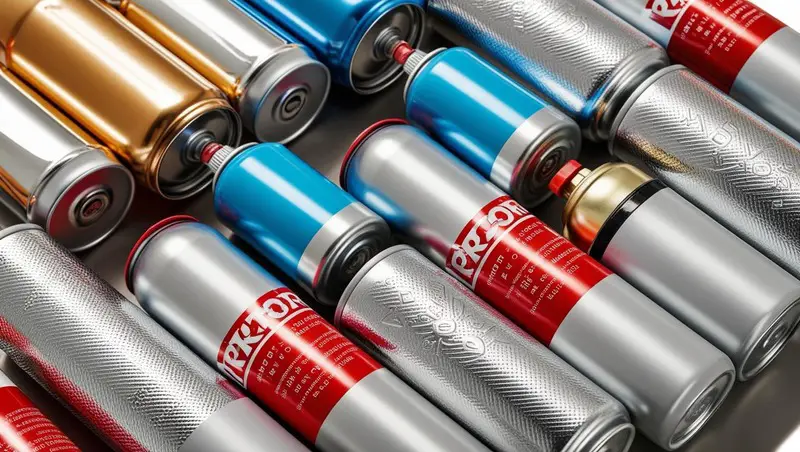Aerosol Cans Ever pondered how that hairspray bottle or discuss freshener oversees to convey a culminate fog each time? Meet the humble, however powerful, airborne can a cutting edge wonder tucked into your kitchen, washroom, and indeed your workshop. Let’s break it down and investigate everything you never knew you required to know.
What Are Airborne Cans?
The Fundamental Concept
Airborne cans are pressurized holders that discharge substances like paints, deodorants, or cooking oils within the shape of a fine fog or splash. Interior, there’s more than fair the product you’ve also got a force that makes a difference shoot it out once you press the spout. Think of it as the enchantment genie bottle of the 20th century (short the wishes).
A Quick Peek into History
TheseAerosol Cans aren’t exactly new.They’ve been around since the 1920s, but truly took off amid WWII when officers required a way to shower creepy crawly repellent in tropical climates. From front line bugs to magnificence routines what a travel, right?
How Do Aerosol Cans Work?
Interior the Can: Pressurized Enchantment
At to begin with look, it’s fair a metal tube. But interior? A complex framework of valves, plunge tubes, and fuels. After you press the button, the weight strengths the fluid or strong out in a fine fog. It’s a bit like shaking a pop can and popping the tab only much more controlled.
Propellants and Their Role
The propellant is key. It might be a gas (like butane or propane) or a compressed air substitute. As it expands, it pushes the product through the nozzle. No propellant? No spray.
Types of Aerosol Cans
Single-Use vs. Refillable
Most cans are single-use, but eco-conscious brands are presently rolling out refillables. Envision buying one nice-looking can and fair swapping the inside smart and maintainable.
By Fabric: Steel, Aluminum, and Plastic
Steel: Solid and cheap. Found in numerous family items.
Aluminum: Lightweight and corrosion-resistant.
Plastic: Uncommon, but utilized for particular needs like makeup.
Common Employments of Airborne Cans
Family Applications
From bug splashes to discuss fresheners and whipped cream, vaporized cans make life a small less demanding around the house.
Mechanical & Commercial Employments
Think paint, lubricants, and even food-grade sprays in factories. Aerosol delivery is precise and efficient—essential in high-stakes environments.
Medical & Personal Care
Inhalers, antiseptics, and deodorants? Yep, all thanks to aerosol tech. It’s health care meets convenience.
Aerosol Cans and the Environment
Are They Recyclable?
Yes, but with a catch—they must be completely empty before recycling. Check with local waste facilities because rules vary.
Environmental Concerns with Propellants
Old-school airborne cans utilized CFCs (chlorofluorocarbons), which were infamous for harming the ozone layer. But present day cans utilize more secure choices, like hydrocarbons or compressed gasses. Still, there’s room for enhancement.
How to Securely Utilize Aerosol Cans
Capacity Tips
Store in a cool, dry put. Tall warm + pressurized can = potential impact. Don’t take off them in your car on a hot day-seriously, don’t.
Secure Transfer
Never toss a half-full can into the trash. Take it to a hazardous waste facility. It’s safer and environmentally sound.
The Science Behind the Spray
Newton’s Laws in Action
The moment you press that nozzle, Newton’s Third Law is in full force. For each activity (splash out), there’s an rise to and inverse response (weight pushing internal).
Atomization Explained
The nozzle is designed to break the product into super-fine droplets. This process, called atomization, helps coat surfaces evenly—like turning liquid into a misty cloud.
Innovations in Aerosol Technology
Eco-Friendly Alternatives
Aerosol Cans Companies are developing non-aerosol sprays that mimic the effect without harmful gases. There are even air-powered systems and bag-on-valve tech for better sustainability.
Smart Spray Systems
Picture a spray can with adjustable mist settings. Tech is taking over, and we’re here for it. Precision and reduced waste? Win-win.

Regulations and Safety Standards
Global Safety Codes
Governments worldwide regulate what goes into aerosol cans. From propellant types to labeling, there’s a checklist to keep us safe.
Labeling and Warning Symbols
You’ve seen the fire symbol, right? It’s not just decoration. Those warnings are legit—read them!
DIY Aerosol Projects
Custom Spray Paints
Artists and makers love customizing spray cans with specific color mixes. It’s like graffiti with a personal twist.
Homemade Air Fresheners
With the right refillable canister and essential oils, you can ditch the synthetic scents for your own blend. Spa vibes, anyone?
Aerosol Myths Busted
“They All Harm the Ozone”—True or False?
False! Most modern cans use ozone-safe propellants. That said, always check the label.
Can They Explode?
Only if misused.Keep them absent from warm or blazes, and you’ll be fine. They’re more secure than you think.
Last Contemplations
Airborne cans are everywhere from your morning schedule to your end of the week DIY extend. They’re helpful, effective, and more feasible than you might accept. With the correct information, you’ll utilize them securely and mindfully. So another time you spritz, splash, or mist-take a moment to appreciate the small can that seem.
FAQs
1. Are airborne cans prohibited in any nations?
A few forces are limited, but the cans themselves aren’t ordinarily prohibited. Nearby laws change, in spite of the fact that.
2. Can I refill an airborne can at domestic?
As it were in the event that it’s outlined for it. Don’t endeavor it with standard disposable cans it’s hazardous.
3. Why does my vaporized can halt splashing indeed when it feels full?
It can be a clogged spout or moo weight. Attempt running warm water over the spout to unclog it.
4. Are there eco-friendly vaporized choices?
Yes! Seek for bag-on-valve frameworks, air-powered showers, or pump bottles.
5. What ought to I do in the event that an airborne can spills?
Move it to a ventilated range, maintain a strategic distance from blazes, and arrange of it securely. In the event that it’s spilling gravely, call your neighborhood squander specialist.

